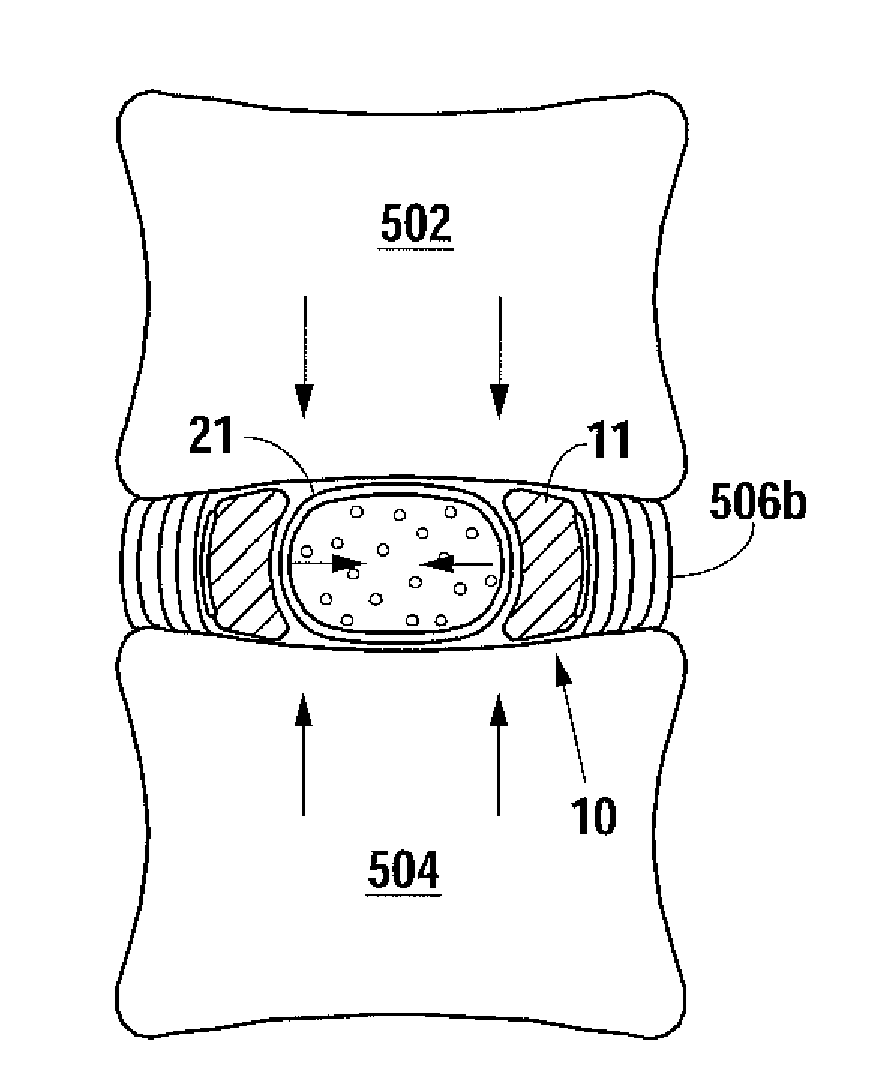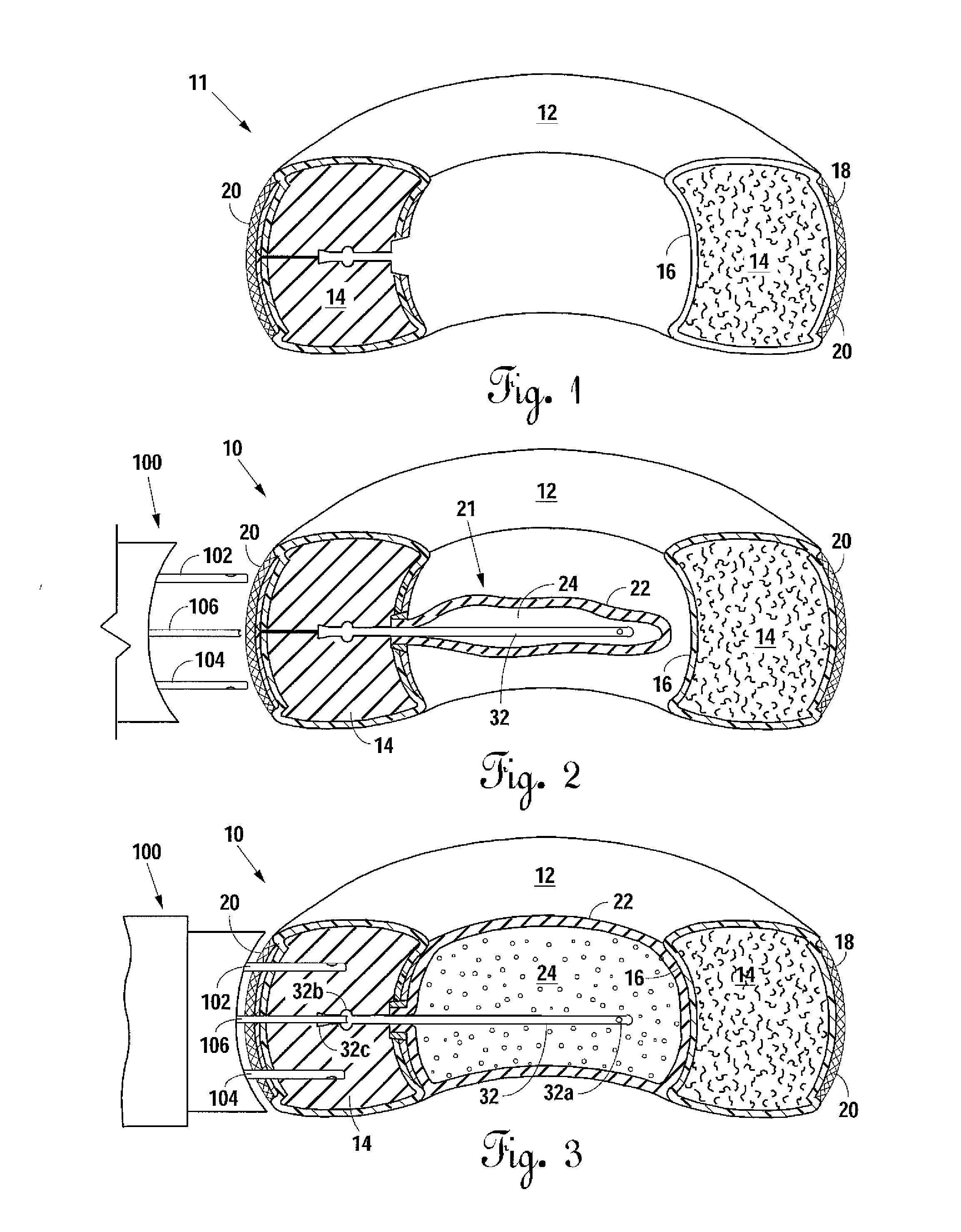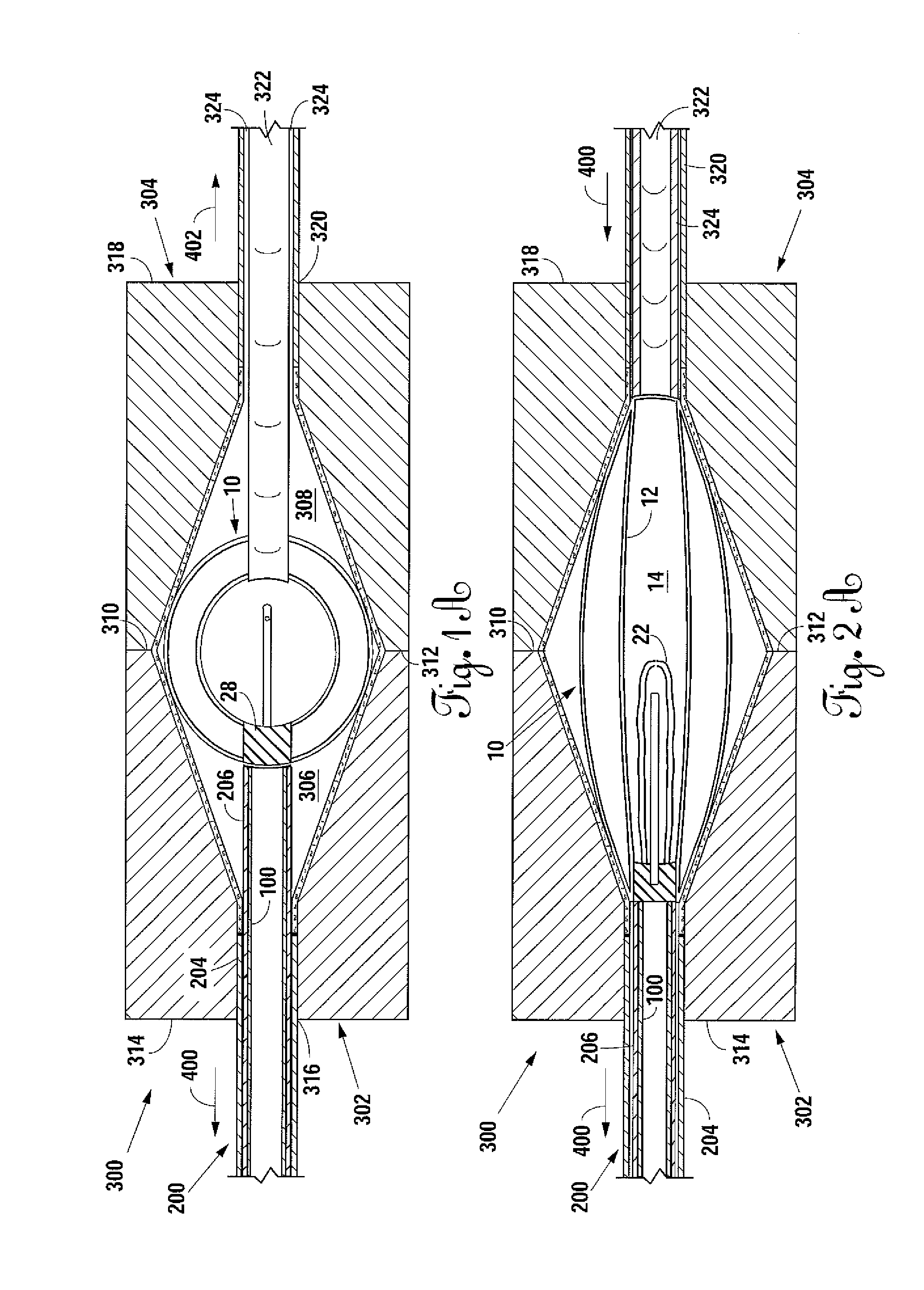Percutaneous Implantable Nuclear Prosthesis
a nuclear prosthesis and implantable technology, applied in the field of body implantable devices, can solve the problems of disc desiccation, nerve roots irritation, loss of disc space height and pressure, etc., and achieve the effect of improving the stability and stability of the nerve roo
- Summary
- Abstract
- Description
- Claims
- Application Information
AI Technical Summary
Benefits of technology
Problems solved by technology
Method used
Image
Examples
Embodiment Construction
[0074]Referring to FIGS. 1 through 4 the nuclear prosthesis 10 of the present invention is disclosed. Nuclear prosthesis 10 comprises an annular structure 11 and a nuclear structure 21. Annular structure 11 comprises an annular enclosing layer 12 defining an annular enclosure 14, and nuclear structure 21 comprises a nuclear enclosing layer 22 defining a nuclear enclosure 24. Nuclear enclosing layer 22 is disposed adjacent annular enclosing layer 12 in the central space defined by annular enclosing layer 12, along an inner margin 16 thereof. Annular structure 11 of nuclear prosthesis 10 further comprises an annular reinforcement band 20 contiguous with or adjacent a peripheral or outer margin 18 of the inflatable annular enclosing layer 12 and a sealing valve core 28 of a sealing valve assembly 26. Annular enclosing layer 12 incorporates the sealing valve core 28 and annular enclosure 14 filled in-situ with curable rubber. In its inflated state, nuclear prosthesis 10 is substantially...
PUM
| Property | Measurement | Unit |
|---|---|---|
| thick | aaaaa | aaaaa |
| shape | aaaaa | aaaaa |
| compressible | aaaaa | aaaaa |
Abstract
Description
Claims
Application Information
 Login to View More
Login to View More - R&D
- Intellectual Property
- Life Sciences
- Materials
- Tech Scout
- Unparalleled Data Quality
- Higher Quality Content
- 60% Fewer Hallucinations
Browse by: Latest US Patents, China's latest patents, Technical Efficacy Thesaurus, Application Domain, Technology Topic, Popular Technical Reports.
© 2025 PatSnap. All rights reserved.Legal|Privacy policy|Modern Slavery Act Transparency Statement|Sitemap|About US| Contact US: help@patsnap.com



